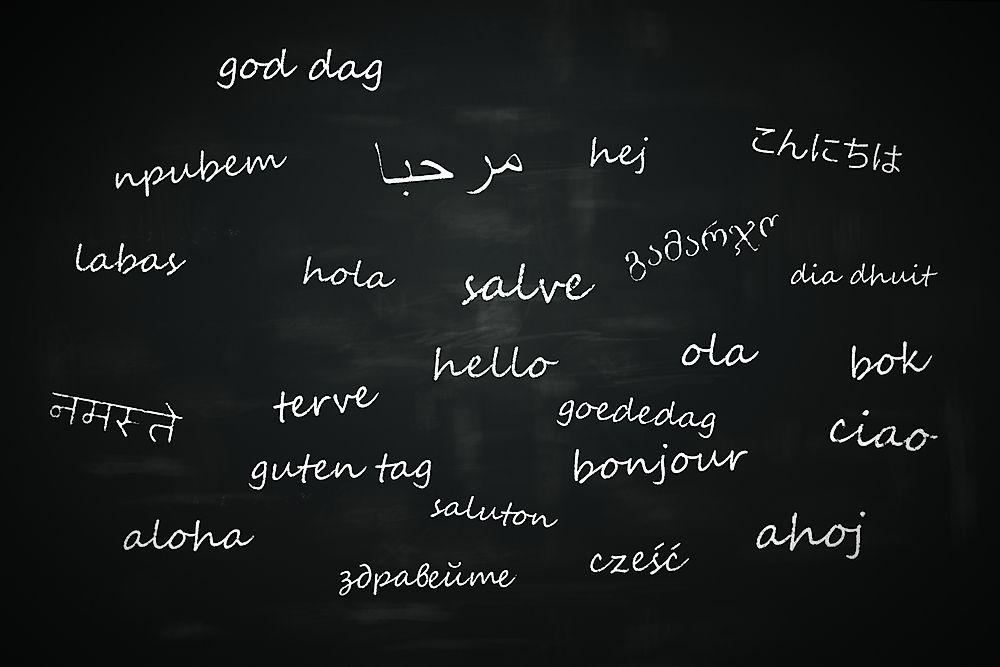The Most Spoken Uralic Languages

The Uralic language encompasses a group of 38 languages spoken by an estimated 25 million people in Europe. Hungarian, Finnish, and Estonian have the largest number of speakers of the Uralic languages. The term 'Uralic' suggests that the regions where these languages are spoken lie on each side of the Ural Mountains.
The Uralic Languages With The Highest Number Of Speakers
Hungarian
Hungarian is spoken by 56% of the total speakers of the Uralic languages. It is the official language in Hungary, and it is also recognized as one of the European Union's official languages. Hungarian diaspora also speaks the language in nations such as Serbia, Romania, and Croatia. The history of the language is thought to date back to the first half of the 1st millennium B.C.E. when it broke away from its Ugric relatives in western Siberia. Hungarian was heavily influenced by other languages the Hungarian community came into contact with including Slavic, Romanian, and German. An estimated 99.6% of Hungary’s population speaks Hungarian where 98.9% of this number uses it as a first language and the rest 0.7% speak the tongue as a second language. Hungarian is also an official language in Vojvodina as well as in three municipalities in Slovenia.
Finnish
Finnish, along with Swedish, make up Finland's official languages. Finnish is spoken by 20% of the total speakers of Uralic languages. The majority of the people in Finland use Finnish as well as Finnish communities in foreign countries. Finnish has official status as a minority language in Sweden. A Finnish dialect known as Meänkieli is spoken in Sweden while another dialect named the Kven language has speakers in Northern Norway. The language was given official status by the European Union in 1995. Mikael Agricola is identified as the founder of literary Finnish. He was a Lutheran clergyman who, while translating the Bible to Finnish, established the standards on which the Finnish language is still based on.
Estonian
Estonian is spoken by 4.2% of the total speakers of Uralic languages. The language is part of the Finnic branch of the larger Uralic language family. Over the centuries, Estonian has borrowed heavily from Russian, Swedish, and German. There are two historical Estonian tongues namely the South and North Estonian languages. The modern-day standard Estonian language evolved from the dialects of Northern Estonian. The Estonian language became the official tongue of a newly independent Estonia in 1919. During Soviet occupation of the state, Russian became the other of the two official languages until the collapse of the Soviet Union.
Erzya
2.8% of the total speakers of Uralic languages speak Erzya. The language is spoken by an estimated 260,000 people in the north-western, northern, and eastern regions of the Republic of Mordovia as well as the Russian regions of Tatarstan, Penza, Saratov, Nizhniy Novgorod, Orenburg, Bashkortostan, Chuvashia, Samara, and Ulyanovsk. Erzya is also spoken by communities in Estonia, Kazakhstan, and Armenia. The Erzya language is part of the Mordvinic language branch of the Uralic family. The language is closely related to the Moksha language although it differs in vocabulary, phonetics, and morphology.
Endangered Uralic Languages
A number of Uralic languages have been identified as endangered. The Enets language, native to Northern Siberia, has about ten fluent speakers while the number of potential speakers is estimated to be below 40 people. Another endangered Uralic language is the Inari Sami language which has about 300 speakers in Finland. Most of these speakers are middle-aged or older, and few children can learn it. The Pite Sami language has been identified as a critically endangered language. The language is native to Sweden and Norway, and the number of native speakers is estimated at 25 to 50. The Votic language, spoken in the region of Ingria in Russia, is close to extinction with only 68 speakers.
The Most Spoken Uralic Languages
| Rank | Uralic Language | Relative percentage of speakers |
|---|---|---|
| 1 | Hungarian | 56% |
| 2 | Finnish | 20% |
| 3 | Estonian | 4.2% |
| 4 | Erzya | 2.8% |
| 5 | Moksha | 2.5% |
| 6 | Mari | 2% |
| 7 | Udmurt | 1.9% |
| 8 | Komi | 1.6% |
| 9 | Other | 8.9% |











